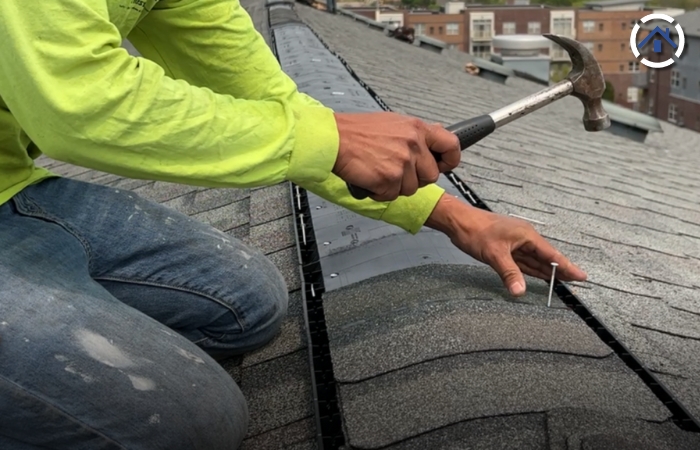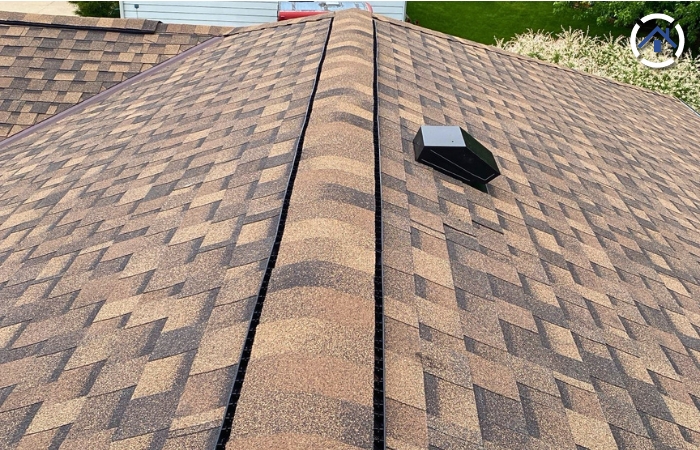
A poorly ventilated attic can lead to numerous issues, including overheating, mold growth, and higher energy bills. This underscores the importance of proper ventilation, where the debate between ridge vents and box vents arises. While these roof fixtures may seem small, they play a vital role in maintaining a comfortable and well-ventilated home. But are these vents truly equal in performance and functionality?
Understanding the differences between ridge vents and box vents is essential for homeowners in selecting the best option for their homes. Here are some key details to help you:

Ridge vents and box vents are both types of roof vents, but they serve slightly different purposes and have distinct designs. Here are the key differences between ridge vents and box vents:
1. Placement and Design:
Ridge Vent — Ridge vents are installed along the peak, or ridge, of the roof. They are typically long, narrow vents that run the entire length of the roof ridge.
Box Vent — Box vents, also known as static vents or roof louvers, are installed on the upper portion of the roof slope. They are box-shaped and are typically placed evenly spaced apart across the roof.
2. Ventilation Method:
Ridge Vent — Ridge vents work on the principle of natural convection. Hot air naturally rises, so when it accumulates in the attic, it exits through the ridge vent located at the peak of the roof. As the hot air escapes, cooler air is drawn in through intake vents, typically located at the eaves or soffits, creating a continuous flow of air through the attic space.
Box Vent — Box vents, also known as static vents or roof louvers, operate differently. They rely on wind to create suction that pulls hot air out of the attic. The shape and design of box vents are optimized to capture wind passing over the roof, creating a vacuum effect that draws air out of the attic. However, box vents may be less efficient than ridge vents in areas with inconsistent or low wind speeds.
3. Aesthetics:
Ridge Vent — Ridge vents are designed to blend in with the roofline, as they are installed along the ridge and are less noticeable from the ground.
Box Vent — Box vents protrude from the roof and are more visible. While they come in various colors to match different roofing materials, they are still noticeable on the roof surface.
4. Effectiveness:
Ridge Vent — Ridge vents are generally considered more effective at providing uniform ventilation along the entire roofline. Since they run the length of the ridge, they offer continuous airflow.
Box Vent — Box vents are effective at ventilating the attic space directly beneath them. However, they may not provide as even ventilation across the entire roof as ridge vents.
5. Weather Resistance:
Ridge Vent — Ridge vents are designed to be weatherproof and are less prone to leakage when properly installed.
Box Vent — Box vents are also weather-resistant but may be more susceptible to leakage if not installed correctly or if the flashing around them becomes damaged.

While it's technically possible to install both ridge vents and box vents on your roof, it's generally not recommended. Here's why:
1. Airflow Conflict: Ridge vents and box vents work on different principles. Ridge vents operate on the principle of natural convection, where hot air rises and escapes through the ridge vent. Box vents, on the other hand, rely on wind to create suction that pulls air out of the attic. Installing both types can create airflow conflicts, where one vent may disrupt the function of the other, leading to less efficient ventilation overall.
2. Aesthetics: Having both ridge vents and box vents on your roof can affect its appearance. It may appear cluttered or mismatched, detracting from the overall aesthetics of your home.
3. Cost: Installing both types of vents means additional materials and labor costs. You'll need to purchase and install both ridge vents and box vents, which can increase the overall expense of your roofing project.
4. Maintenance: More vents mean more areas that require maintenance and inspection. Cleaning, repairing, or replacing multiple types of vents can be more time-consuming and costly in the long run.
The effectiveness of ridge vents relies on their ability to run uninterrupted along the entire length of the roof ridge. When the ridge is too short or obstructed by architectural features like dormers, valleys, or hips, it becomes challenging to install a continuous ridge vent. In such cases, installing a ridge vent might not be feasible or practical, as it may compromise the ventilation system's efficiency and effectiveness. These interruptions can disrupt the airflow pattern, reducing the vent's ability to exhaust hot air uniformly from the attic space.
Additionally, attempting to install a ridge vent on a short or interrupted ridge might require modifications or compromises that could affect the roof's structural integrity or aesthetics. Therefore, it's crucial to assess the roof's characteristics and consult with a roofing professional to determine the most appropriate ventilation solution for optimal performance and compatibility with the roof's design.

Understanding the differences between ridge vents and box vents is crucial for homeowners looking to ensure proper ventilation in their attics. Each type has its own advantages and considerations, from placement and design to effectiveness and weather resistance. While it may be tempting to install both ridge and box vents for maximum ventilation, doing so can lead to airflow conflicts, aesthetic concerns, increased costs, and maintenance requirements.
Moreover, the suitability of ridge vents depends on the specific characteristics of the roof, including its length, configuration, and structural integrity. Roof designs with interruptions such as dormers, valleys, or hips may pose challenges for installing continuous ridge vents, potentially compromising their efficiency.
To ensure the right ventilation solution for your roof, it's essential to consult with roofing experts. They can assess your roof's unique features and recommend the most appropriate ventilation system to promote optimal airflow and maintain the integrity of your roof. By working with professionals, homeowners can make informed decisions and ensure that their roofs are equipped with effective and efficient ventilation.